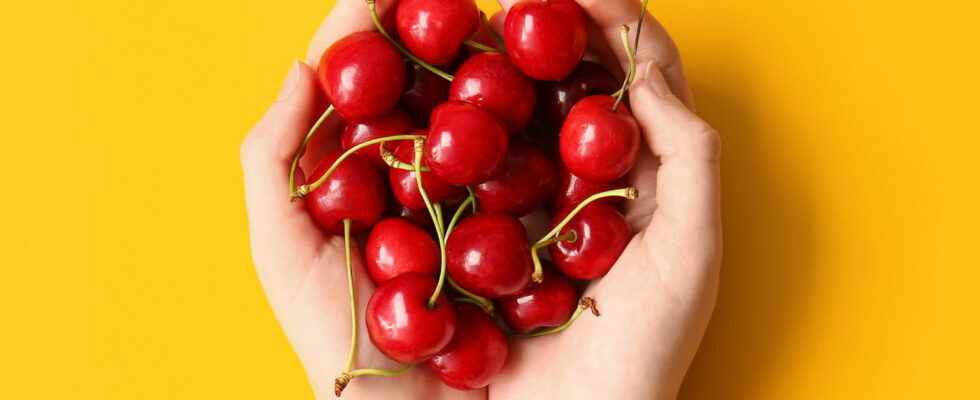More than half of the fruits and vegetables from conventional (non-organic) agriculture in France are said to be contaminated with pesticide residues dangerous to health, warns the UFC-Que Choisir in an observatory published on March 24, 2022. What are the most contaminated fruits and vegetables? The safest? What dangers?
More than half of plant products from conventional agriculture would be, in France, contaminated with hazardous pesticide residuesreports theUFC-What to choose in an observatory published on March 24, 2022. Some of these substances (insecticides, fungicides, etc.) could be carcinogensdisrupt the system endocrine where to be reproductive toxins. To reach this conclusion, the Federal Consumers’ Union compared the analyzes of over 5,000 plant-based foods with the list of substances considered probably dangerous by the French or European regulatory agencies (including ANSES). Discover the ranking of fruits and vegetables containing the most pesticides in France and advice on how to limit consumption.
What is the ranking of the fruits most contaminated with pesticides?
| Fruit | Frequency of contamination by a hazardous residue | Frequency of contamination by a residue classified as CMR* | Frequency of contamination by a residue that may have an effect on the endocrine system | Most frequently detected risk residues |
|---|---|---|---|---|
| Cherry | 91.9% | 75.7% | 89.2% | Phosmet (47.7%), Tebuconazole (36.9%) |
| Grapefruit | 90.6% | 81.1% | 84.9% | Imazalil (81.1%), Thiabendazole (47.2%) |
| Peach/Nectarine | 89.7% | 69.1% | 89.7% | Fludioxonil (32.4%), Boscalid (26.5%) |
| Apple | 79.8% | 54.8% | 78.8% | Fludioxonil (48.1%), Flonicamid (21.2%) |
| Grape | 77.1% | 57.8% | 77.1% | Boscalid (18.1%), Dimethomorph (13.3%) |
*CMR substances: carcinogenic, mutagenic, toxic substances for reproduction.
>> See the complete comparison on the UFC-Que Choisir website
What is the ranking of the vegetables most contaminated with pesticides?
| Vegetable | Frequency of contamination by a hazardous residue | Frequency of contamination by a residue classified as CMR* | Frequency of contamination by a residue that may have an effect on the endocrine system | Most frequently detected risk residues |
|---|---|---|---|---|
| Celery | 91.2% | 76.5% | 91.2% | Difenoconazole (76.5%), Azoxystrobin (64.7%) |
| Brussels sprouts | 84.6% | 71.4% | 84.6% | Boscalid (7.03%), Spirotetramat (57.1%) |
| green bean | 73.6% | 42.6% | 73.3% | Azoxystrobin (42%), Imidacloprid (16.5%) |
| Celeriac | 72.9% | 61% | 72.9% | Difenoconazole (52.5%), Azoxystrobin (27.1%) |
| Fennel | 63.6% | 32.7% | 63.6% | Cyprodinil (38.2%), Difenoconazole (36.4%) |
Which fruits and vegetables are the least contaminated with pesticides?
Certain fruits and vegetables with thick skin or shell (watermelon, walnut, avocado…) and are naturally protected from pesticides. Moreover, since their skin is not consumed, the risks of contamination are limited. In addition, other plants are a little less affected by pests and therefore require less treatment (such as asparagus, broccoli or potatoes). Here is the list of products least contaminated with pesticides in France according to UFC-Que Choisir:
- Asparagus (2.5%)
- The kiwi (2.8%)
- Cassava (3.4%)
- Walnut (4.4.%)
- Broccoli (8.7%)
Which pesticides are dangerous to health?
Among the substances frequently found in certain fruits and vegetables, some are dangerous to health. For example :
- Fludioxonil (48% of apple samples) is a fungicide suspected of being an endocrine disruptor.
- Phosmet (92% of cherry samples) is an insecticide suspected by the European Food Safety Authority (EFSA) to be toxic for the reproductive function.
- Pyriproxyfen (27% of grapefruit samples) is strongly suspected to be an endocrine disruptor and to have contributed to head and brain malformations observed in Brazil.
- Imidacloprid is strongly suspected of being an endocrine disruptor.
- Thiamethoxam is suspected of being reprotoxic and endocrine disruptor.
| Endocrine disruptors are substances capable of interfering with our hormonal system, causing deleterious effects, defines ANSES. |
|---|
To note, “in most samples, the quantities of residues found respect the regulatory limits, supposed to guarantee the absence of risk. But the ability of these caps to protect consumer health is currently being seriously questioned.“, indicates the Consumers’ Union. Based on its study, the UFC-Que Choisir therefore requires a strengthening of the national and European regulatory frameworkthrough the overhaul of authorization procedures and in particular the development of official methodologies to better identify carcinogenic, mutagenic, reprotoxic compounds or endocrine disruptors, as well as the effects of a mixture of substances (called “cocktail effect”). She has moreover contacted ANSES so that it formulates concrete proposals for improving the regulations.
► Choose organic fruits and vegetables (organic farming is opposed to conventional farming) or with a “pesticide-free” label“, ideally grown by local farmers. “The UFC-Que Choisir study shows that organic foods are much less contaminated in particular because of the ban on synthetic pesticides for this mode of production […] In the rare cases, where the bio is contaminated, the levels of hazardous pesticides found are also much lower than conventional. They are only quantifiable for 8% of the samplesin all other cases the substances being generally absent or present in the state of non-quantifiable traces”.
► Wash fruits and vegetables well and/or peel them. The skin of some products retains pesticides. But this is often where the vitamins and nutrients are concentrated. Washing them seems to be the right option. To properly clean fruits and vegetables, they must be immersed in a large bowl of water for several minutes or cleaned in water with White vinegar (rinse well with clean water afterwards).
Source: Observatory of pesticides, published on 24/03/2022 by QueChoisir.org Analyzes relating to 70 types of products (grouping more than 5,000 foods), on 5,150 controls of foods from conventional agriculture, carried out by the Directorate General for Food and Directorate General for Consumer Competition and Fraud Prevention.
